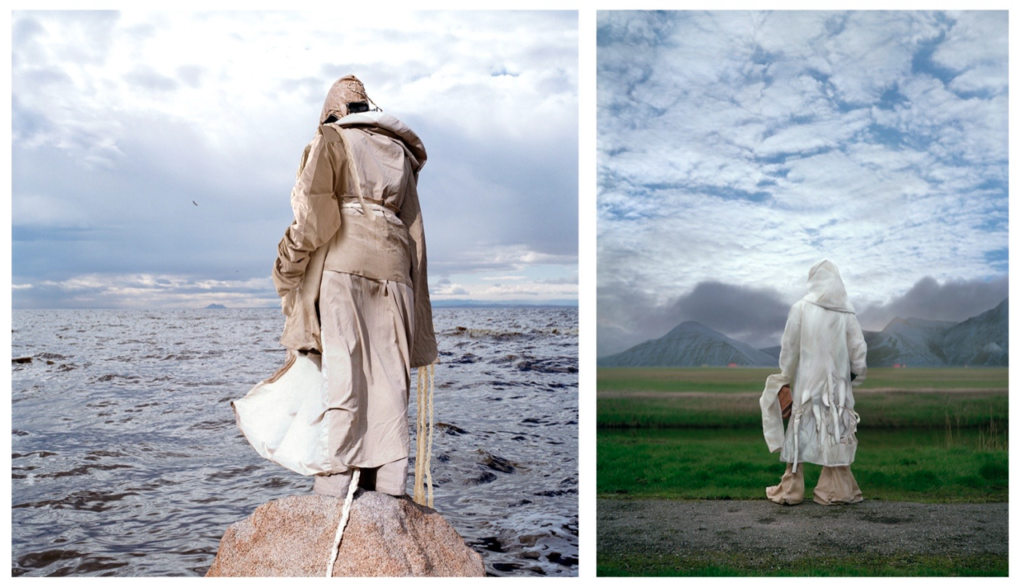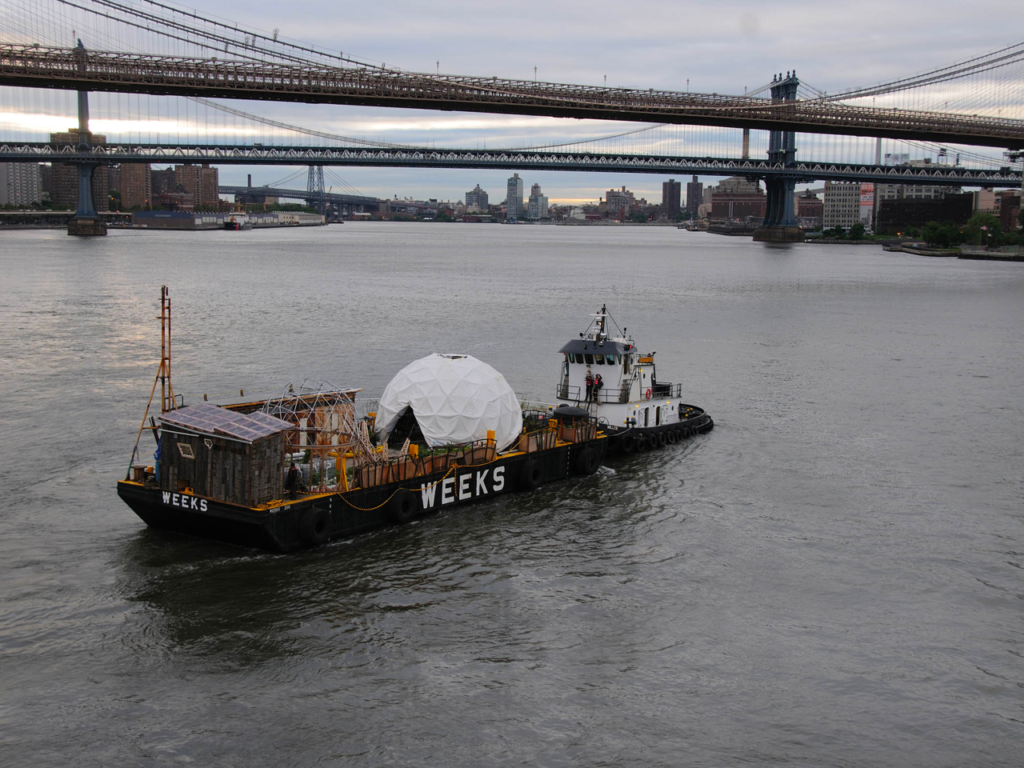Mary Mattingly is an American artist. Born in 1978, she lives and works in New York City.
Alice Audouin: You are a pioneer of ecological art in New York City. Since 2003, you have mainly created public art, with a strong participatory scope.
Mary Mattingly: When I started, my work was not perceived as fine art. It was less common to experience participatory public artwork. At the time, public art was more about large sculptures in a public space. Now, the visitors understand the diversity of public art better. This is a place where many things can happen, more multidisciplinary things. As an artist, my goal is to link art and life, the two can’t be separated.
You started 20 years ago with a visionary approach on climate refugees.
I started to make Wearable Homes in 2003, which embodied many ecological issues. I was thinking about mobility and climate refugees who would have to move more and more, and also water issues. Water was always something I was thinking about. Where I grew up, the drinking water was polluted, it was common in my life when I was a kid. In the 2000’s, there was a lot of news in the media about water privatization. Combined with the consequences of climate change, I knew that more and more people would lack access to basic resources such as clean water. With this work, I have explored a future in which most people would be focused on survival, acclimation, and movement as a result of unpredictabilities surrounding climate change. To create this sculptural home, I mixed fabrics and technology. I also used encapsulated warmers, like those found in electric blankets, with sensors able to adjust to the body’s temperature.
In 2009, Waterpod was a huge turning point in your career.
Yes, Waterpod was a large water-based and interdisciplinary art project in New York City. It was a floating, sculptural, eco-habitat designed for the rising tides, navigating down the East River. This experience was very important and changed the way I thought about what art could be. I learned a lot from all the people coming and contributing to it from all over the world. It was more optimistic. Basic needs, food, clean water, start a conversation and engage people. This sustainable, navigable living space raised many questions on food security and access to basic needs. Beyond that, it connected rivers to visitors, global to local, nature to city, and historic to futuristic ecologies.
You’ve just launched Ebb of a Spring Tide, which addresses sea level rise and floods in New York City.
It just opened in Socrates Sculpture Park, along the East River, on the waterfront of Western Queens County. It is a new sculptural work exploring relationships to coastal ecosystems and the shifting nature of rivers and water lines. I show how the East River is not just a line on a map but an integral part of a larger water cycle, and it is under threat from sea level rise due to climate change.
Flooding is a huge concern in New York. It is flooding more and more. My own apartment in downtown Brooklyn was flooded last September. Flooding is strongly related to food, and the East River is salt water. Soils will soon not be able to handle the impact of the floods. I explore new models, based on collaboration, so we can prepare for a changing world through innovative design and a restorative relationship with nature.
The link between art and the environment is getting stronger here in New York. How do you see this change?
I see a lot of actions linking art and the environment. Many artists are concerned and thinking about environmental issues. In the last 3 to 5 years, more and more artists have created artwork about it. They are thinking through their materials and also through larger and cross-disciplinary projects.
You said that when you started, your work was not perceived as fine arts. Do you still suffer from this misunderstanding?
Oh yes, Waterpod was not considered fine art, and I am not sure that Ebb of a Spring Tide will either, but that’s fine. Things will change. I see people connecting large changes in the world with art that was happening at the time, so I am sure that, in the future, we will understand it. I am an artist, and what I am creating is art. I work with a gallery and my work is also part of the art market.
Al Gore often cited the proverb “If you want to go fast, go alone, if you want to go far, go together” when he was speaking about solutions to fight climate change.
I didn’t know that, but I like it! Yes, it is exactly that!
In conversation with Alice Audouin
May 2023
Learn more about Mary Mattingly: https://marymattingly.com/
Cover: Mary Mattingly Photo © Iconeye
Impact Art News, April-May 2023 #43
Subscribe to Impact Art News: here




